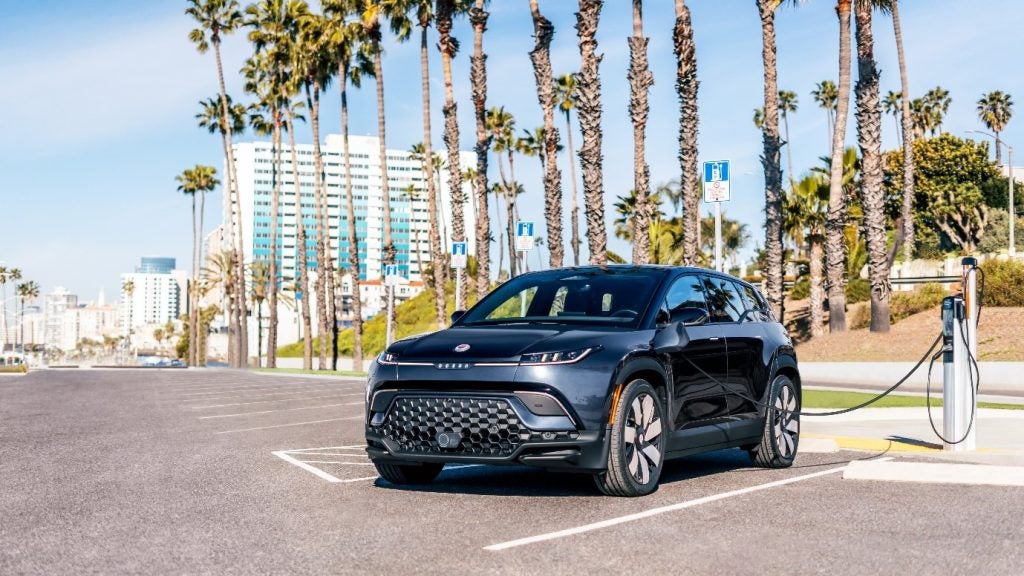Once upon a time, cars were cars and trucks
were trucks. Trucks for hauling tools, supplies and workers. Cars were for driving the
kids to school and Dad to the office. That was then. Now, trucks have become substitutes
for the family sedan.
Between World War II and the first oil
crisis, market share for trucks in the United States wavered back and forth from 10 to 20%
of the total market. Following the war, truck sales spiked immediately as businesses
retired vehicles purchased more than four years earlier, but then car sales took back
their market share when the GIs came home and the consumer market exploded.
Truck sales began to surge again during the
early 1960s, spurred by the introduction of new types of trucks. Ford’s Econoline van and
Chevrolet’s Corvair van opened up new concepts of what a truck could be. International’s
Scout, Ford’s Bronco, and the Chevrolet Blazer/GMC Jimmy moved this market further,
intruding into station wagon territory but only rarely replacing the family station wagon.
 THE
THE
WATERSHED YEAR: 1982. Market share for trucks broke the 20% barrier in 1972 for
the first time since 1947, and remained in the 20-25% range until 1982, when the market
changed.
Starting in 1982, light truck market share
no longer followed the ups and downs of the economy, but began the steady upward trend
–were 23.5% in 1982, 30% in 1987, 40% in 1995 — toward its 48% level today. Many
analysts credit the SUV for the shift toward trucks. But if the SUV were mainly
responsible, truck market share would have spiked in 1990-92. In fact, the movement toward
trucks has continued at an almost linear pace from 1982 through 1998.
JAPAN SHOWS THE WAY. But
while it began in 1982, this steady shift away from cars to trucks had it roots much
earlier. In the 1970s, thanks to high fuel prices caused by the oil crisis, the Japanese
made quick inroads into the American market. Not only were their cars more fuel-efficient
than American cars; their trucks were economical and, as a bonus, car-like, and found a
ready audience.
How well do you really know your competitors?
Access the most comprehensive Company Profiles on the market, powered by GlobalData. Save hours of research. Gain competitive edge.

Thank you!
Your download email will arrive shortly
Not ready to buy yet? Download a free sample
We are confident about the unique quality of our Company Profiles. However, we want you to make the most beneficial decision for your business, so we offer a free sample that you can download by submitting the below form
By GlobalDataAt that time, no US automaker built small
pickups in volume. Ford and International had marketed pickup versions of their small
utility vehicles since the 1960s, but they were never produced in annual volumes above
5,000. Neither the Ford Bronco nor the International Harvester Scout/Terra pickups were as
well received as the true small pickups from Asia. Datsun’s pickup, for example, was the
second best-selling product in the Nissan lineup (behind the B210/210) until 1984. Isuzu,
a late entry in the American market, sold more P’up pickups through 1988 than any other
Isuzu model. Mitsubishi‘s and Toyota’s pickups were each brand’s top-selling models in the
mid-1980s. There are several reasons for this shift.
 REASON
REASON
I: SPACE. Ask SUV drivers why they drive what they do and they are likely to
extol the virtues of sitting up high, or the feeling of safety it gives them. As auto
design has progressed, cars have become increasingly lower to the ground. While a low car
has much better aerodynamics and gas mileage, it presents ergonomic problems. Today’s car
is much more difficult to enter and exit than its 1950s predecessors, and its headroom has
been reduced. With a more upright body, SUVs and minivans give drivers the more erect
seating position found in cars of thirty years ago, and vertical designs allow for doors
to be taller and the floor higher, improving access.
| Loopholes Become Windows Of Opportunity Depending on the branch of the government, some vehicles are classified as both trucks and cars. Four-door sport-utilities are classified as cars and avoid the “chicken tax” while, until fairly recently, two-door versions of the same vehicles were called trucks and subject to the tariff. But both have always been classified as trucks according to the EPA (for CAFE purposes). Vans with windows were called cars until 1981, when they were changed to trucks along with their non-windowed counterparts. |
REASON II: CAFE. Another
reason for the shift to trucks was the fuel mileage mandate. Since the enactment of the
Corporate Average Fuel Economy (CAFE) requirement, VMs have been forced to make smaller
and smaller cars. At first, the buying public welcomed them: gas prices were setting
historic highs, and everyone expected them to continue to rise. Sales charts tell the
story very clearly. In 1977, America’s top-selling model was the full-sized Chevrolet
Caprice/Impala, which sold almost 660,000 units. As CAFE went up, Caprice sales went down.
By 1979, Caprice sales had fallen to 450,000 units (third most popular vehicle) and a year
later to 260,000 (seventh place), outsold by three smaller Chevrolet models.
 When the
When the
price of gasoline peaked in 1981 and began to drop, people moved back to larger models. By
1983, Ford and GM were unable to meet the 26.0-mpg requirement, and were forced to sell
small cars at a loss to offset the low-mileage larger cars the public desired.
Meanwhile, trucks were covered — or
sheltered — under a separate CAFE regulation. Light trucks (Class 1 and Class 2 trucks —
under 8500lbs. GVWR) were required to average only 17 mpg beginning a year after the car
CAFE came into being, and their poor gas mileage had no effect on car CAFE.
In 1982, Ford and GM began producing
domestically-designed small pickups. The American-built Ranger and S10/S15 pickups
replaced the smaller and more utilitarian Japanese Courier and LUV models. They were
larger and more powerful than compact cars and lower priced than the popular mid-sized
sedans — and they had a big advantage over imported trucks. While imported cars carried a
tariff of only 2.5%, imported light trucks were faced with a 25% “Chicken Tax”
(a tariff designed in the Sixties to thwart the importation of foreign chickens).
So the domestically-produced Rangers and
S10/S15s had an automatic 25% price edge on the imports. With the end of the recession,
that price advantage, plus the car-like nature of the new vehicles jump-started the light
truck market. Since buyers wanted bigger vehicles, and trucks were becoming more
comfortable, VMs began to shift buyers from cars to trucks. Much lower CAFE limits on
trucks allowed automakers to sell larger trucks with little fear of penalty.
Domestic VMs were not the only ones to take
advantage of North American production of trucks. The Datsun/Nissan Pickup, which had been
the second-best selling Nissan product through 1983, became the top-selling model in 1984
when production began in Smyrna, Tennessee — exempt from the Chicken Tax.
 SOCCER
SOCCER
MOMS. In 1983, shortly after the domestic small-pickup wave began, the minivan
emerged. Basically a maximum-volume car, the minivan, as introduced by Chrysler Corp., was
a truck in name only. It used front-wheel drive running gear from the Dodge Aries/Plymouth
Reliant, and unibody designs usually found on cars. Appointments were much more car-like
than the traditional truck-based passenger vans that had come before. GM and Ford followed
Chrysler’s lead with small vans, but took the opposite direction: instead of making a
maximum-volume car, they simply designed smaller trucks. With their Astro, Safari and
Aerostar minivans selling well, GM and Ford minivan sales peaked at around 190,000 each
(GM in 1988 and Ford in 1993), but neither reached the volume the more car-like Chrysler
minivans (Dodge Caravan, Plymouth Voyager, Chrysler Town & Country) have enjoyed for a
decade and a half, averaging more than 376,000 per year.
REASON III: CHEAP GAS.
America’s desire for large vehicles has been fueled by the decrease in constant-dollar gas
prices during the 1990s. (See chart) With truck CAFE high and gas prices low, automakers
were free to push mid-sized trucks into car territory, as they continued their search for
a bottom to the light truck market. When their mid-sized trucks had apparently saturated
the market, they had full-sized models ready to continue the expansion. Four-door versions
of the Chevrolet Blazer (Tahoe) and GMC Jimmy (Yukon) were followed by Ford’s four-door
Expedition replacement for its 2-door Bronco. Then, with their more car-like features and
ride characteristics, light trucks successfully moved into luxury car territory. In 1998,
the RX300, a car-based luxury SUV, became the top-selling Lexus model. Also last year,
Lincoln won the luxury sales crown due primarily to sales of its Navigator SUV.
 Nearly every
Nearly every
brand sold in the US has or plans to have a truck model in the next five years to take
advantage of this profitable market. The latest entry is the Behemoth-class Ford
Excursion, which will not be offered in “light-duty” variants and will only be
sold as an 8,500+lbs vehicle — because current truck CAFE regulations only cover vehicles
up to 8,500lbs GVWR. Ford’s current line of Super-Duty trucks, all over 8,500lbs, are
finding more and more non-commercial buyers, and DaimlerChrysler and General Motors are
not too far behind in offering huge trucks tailored to car buyers.
One of the industry’s more imaginative
solutions to the dilemma posed by high passenger car CAFE standards has been the
“segment-buster” — cars badged as trucks. Chrysler’s new retro-designed PT
Cruiser, which would have been called a hatchback or a station wagon only a decade ago, is
now labeled a truck. More VMs are making new models taller with more ground clearance,
which makes them more truck-like, in one sense, while their styling and interior space
actually harks back to the more upright cars of the pre-1960 era. While truck-based
“trucks” are still growing in sales, many manufacturers have begun to look at
car-based “cross-over” vehicles, which are gaining acceptance for their improved
ride and handling when compared to the previous truck-based SUVs and pickups.
Whether the vehicle is based on a truck or
on a car, vehicles are regulated, licensed, and taxed based on how they are classified,
and the classifications are getting more and more blurry. Car-based hybrids (not including
unibody “trucks” such as the Jeep Grand Cherokee and the Nissan Pathfinder) made
up 17.8% of all trucks in 1997, more than doubling share in a decade. With new models from
Honda/Acura, Ford/Mazda and General Motors expected in the next few years, this percentage
will undoubtedly continue to climb.
In today’s global marketplace, North
America is an anomaly, with gas prices a third of the price in other industrialized
countries. While VMs cannot overlook the need to have a truck suited to this market,
engineering a large, gas-guzzling vehicle for the United States does not make sense when
it will not sell elsewhere. Many companies, such as Honda and Toyota, have been slow to
create a dedicated model that could not enjoy synergies in other countries. After careful
study, these companies are leading the way toward car-based hybrid trucks.
 REASON
REASON
IV: PROFITS. Over the past forty years, cars have been saddled with numerous
safety and emissions regulations, while trucks have been treated comparatively gently.
Less regulation makes trucks cheaper to engineer, but prices are equivalent or higher than
car prices, so profits on trucks can be as high as $20,000 per unit, which endears them to
the vehicle manufacturers and their shareholders. Therefore, as long as CAFE and other
regulations continue to hold cars to a higher standard, the truck will be the vehicle of
choice for manufacturers selling to the American buying public. But profits on trucks may
be relatively short-lived. Beyond increased competition, regulations on trucks will almost
certainly bring them more in line with what they have become — passenger-carrying
vehicles — instead of commercial vehicles as they are currently defined. Higher
fuel economy and lower exhaust emissions are in the not-too-distant future for trucks, as
well as stronger safety regulations and tougher bumper standards.
Preparation for these future changes will
assist manufacturers to make this transition. Companies producing car/truck hybrids are
the least vulnerable, since they can shift with the market from trucks to cars if
necessary, while those companies counting on the continued strength of the traditional
body-on-frame truck market will be most vulnerable in the long term. A dramatic correction
in the demand for “traditional” trucks could be in the offing if gas prices, or
the whims of the American buying public, were to change.
Sam Fiorani, PricewaterhouseCoopers







